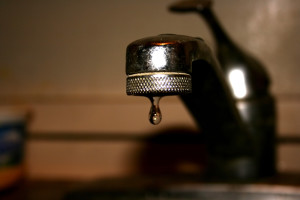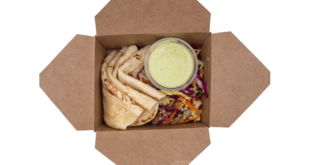 Restaurants use a lot of water. Between cooking, washing dishes, cleaning up, and serving guests, your water bill takes a good chunk out of your monthly budget on a consistent basis. Commercial water conservation is also a big concern of a majority of your customers, especially if you operate in dry western states like California, Arizona, or Colorado.
Restaurants use a lot of water. Between cooking, washing dishes, cleaning up, and serving guests, your water bill takes a good chunk out of your monthly budget on a consistent basis. Commercial water conservation is also a big concern of a majority of your customers, especially if you operate in dry western states like California, Arizona, or Colorado.
This post is going to add to a common theme here on The Back Burner: finding ways to green your restaurant that not only give you serious street cred with your customers, but also add green to your bottom line. The nice thing about commercial water conservation is that it takes minimal investment to realize some pretty serious savings.
Here’s 10 tips to help you save water in your restaurant:
- Serve filtered water on demand only. Don’t just assume your guests want water, and definitely don’t give them bottled water! Not only is bottled water a needless expense, all that plastic is a landfill nightmare. If you don’t serve water automatically, train your wait staff to let customers know they can have water free of charge at any time (after they get the drink order of course!). And if you’re serving water, don’t just pull it from the tap. Use a filtered glass filler to guarantee taste and water quality.
- Fix leaky faucets. That little dribble coming out of the faucets in your kitchen probably don’t seem like a big deal, especially since you’re probably working hellish hours as it is. But looks can fool you. That dribble can add up to thousands of gallons of water each month, and if it’s the hot side of the faucet that’s leaking, that’s hundreds of dollars in energy bills going down the drain as well. Faucet parts are easy to replace and extremely inexpensive, and there’s really no excuse for letting those dollars leak down the drain.
- Low flow pre rinses. A low flow pre rinse can slash your water usage at one of its most wasteful points. These pre rinses give you a heck of a lot more bang for your buck and still clean dishes effectively.
- Wash full racks only. This is a headsmacker tip. The danger is in assuming your kitchen staff is following this rule religiously, because chances are they’re not. Employ a constant education and enforcement program to make sure only full racks get put through your dishwasher. Even conserving a small amount of water translates into big savings for you because that hot water is twice as expensive after you pay to heat it up.
- Retrofit kitchen and bathroom sinks. Aerators make both bathroom and kitchen faucets use less water and are easy to install. In the kitchen, install a three compartment sink for washing dishes because the scrape, wash, rinse technique is much more efficient than doing it all in one compartment under a constantly running stream of water. In the bathroom, install automatic faucets that shut off when not in use and retrofit old toilets and urinals with newer, more efficient ones.
- Train employees. In the end, all the best water-saving equipment in the world doesn’t do you a bit of good if your staff doesn’t take conservation seriously. Make it an ongoing issue in staff meetings and during employee training.
- Use a foot pedal for handwashing sinks. Foot or knee pedals serve two purposes: they allow your staff to turn water on and off without contaminating their freshly washed hands, and they shut off automatically, which can save an astounding amount of water.
- Compost food waste. Instigating a compost program in your restaurant means staff must scrape food bits into your compost bin instead of washing it into the garbage disposal. That means significant water savings. A compost program has the added benefit of giving you additional green credentials for your customers as well.
- Landscape with conservation in mind. Many restaurants not only use water inside the restaurant but outside as well. If you have any landscaping going on outside the restaurant, follow water conservation best practices to keep water usage down.
- Sweep and mop instead of spray. It may seem easier to just spray down kitchen floors and outside areas to keep them clean, but it’s certainly not cheaper. Investing in some good old fashioned janitorial supplies like mops and brooms means some major water savings. It might be a little more work for your staff, but those savings on the water bill will also help you pay their salary.
Finally, after you’ve put all the time into using the above tips to make your restaurant one lean, green, water-saving machine, make sure you tell your customers all about it! You’ve worked hard to cut water usage, and perhaps the biggest reward you deserve is appreciation and increased loyalty from your customers. Incorporate your efforts into your marketing campaigns. It’ll surprise you just how effective a green message is in improving your name in the eyes of customers.
 Corner Booth Blog | TundraFMP Restaurant Supply, News & Equipment Blog
Corner Booth Blog | TundraFMP Restaurant Supply, News & Equipment Blog




Greg – a great article and always timely.
Very nice tips. I think by following these suggestions one can really add in the efforts of preserving and saving water.
One of the most obvious reasons to practice water conservation is in a situation where water supplies are limited. An ongoing drought can restrict supply, as can a change in water policy, especially in an area where people are dependent on water from other places. Desert regions, for example, rely on water which is shipped, trucked, or moved through aqueducts, so distant policy decisions can directly impact the amount of water which can be accessed in these areas.